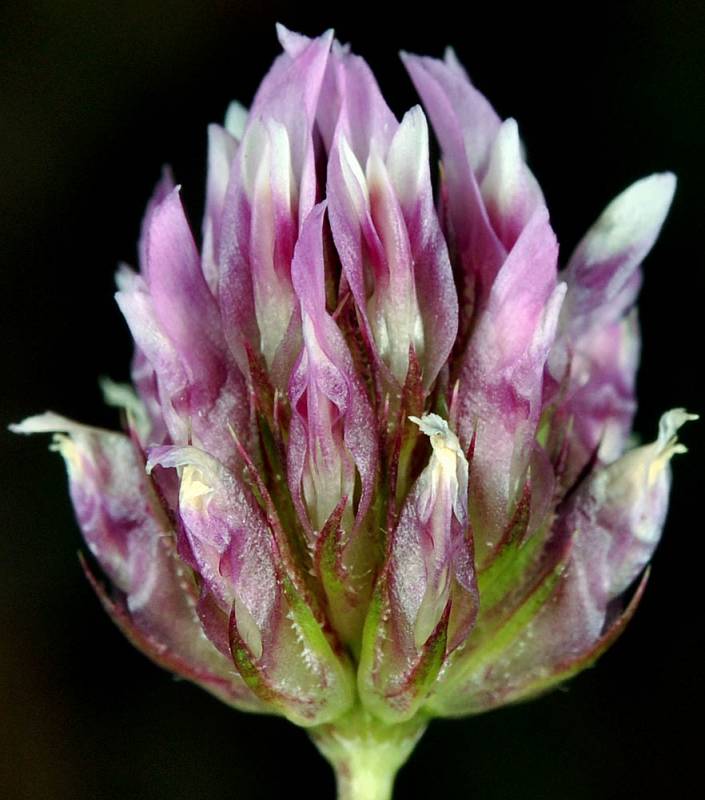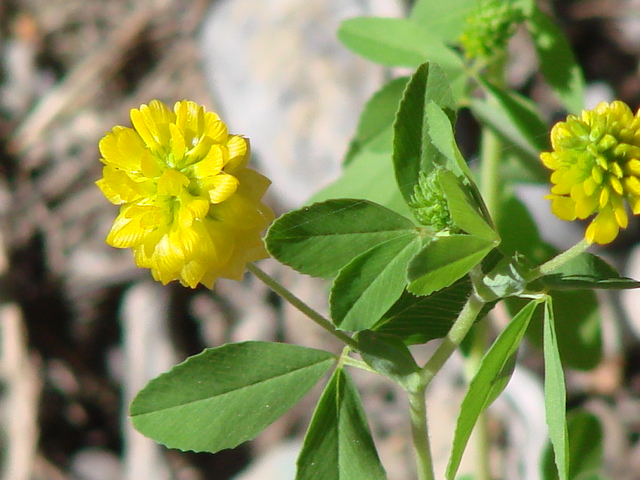Trifolium ciliolatum
Trifolium aureum
foothill clover, tree clover
golden clover, greater hop clover, yellow clover
Leaves alternate, trifoliate;
stipules 1-2.5 cm. long, with entire, acuminate tips;
leaflets oblong-elliptic to oblanceolate or broader, 1-3.5 cm. long, finely denticulate the entire length, the teeth needle-like.
Leaves trifoliate, leaflets oblong-elliptic to oblanceolate, 1-3 cm. long, sub-sessile, serrulate 2/3 their length;
stipules narrow, 10-18 mm. long, attached to the petiole over half their length, the free portion acuminate.
Inflorescence of 10- to 50-flowered heads, the heads axillary as well as terminal, 1-2 cm. long, subglobose, without an involucre;
flowers white to purplish, 6-12 mm. long, erect but becoming reflexed as the pedicles elongate to up to 6 mm.;
calyx glabrous, about equal to the corolla, the tube 10-veined, the 5 teeth fringed, 2-3 times as long as the tube, the upper 2 much the longest.
Inflorescence of 30- to 100-flowered heads, 10-16 mm. thick, on axillary peduncles longer than the leaves;
flowers 5-7 mm. long, yellow, pea-like;
calyx glabrous, half the length of the corolla, the upper 2 teeth about half as long as the lower 3, the latter slightly longer than the calyx tube;
banner flared and spreading, much longer than the wings and keel.
Pod 1-seeded
Pod 1-seeded, equal to the attached style.
Trifolium ciliolatum
Trifolium aureum
- Local floras:
BC,
CA,
OR,
WA
- Local Web sites:
CalFlora,
CalPhotos,
Flora NW,
PNW Herbaria
WildflowerSearch
iNaturalist (observations)
USDA Plants Database
- LBJ Wildflower Center
- SEINet
- Plants of the World Online
- Encyclopedia of Life
- Wikipedia
- Google Image Search



